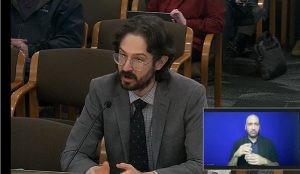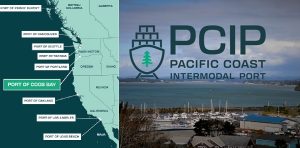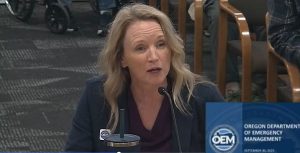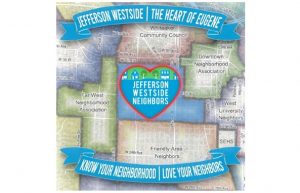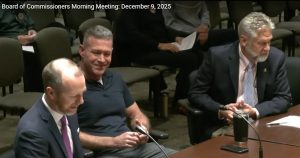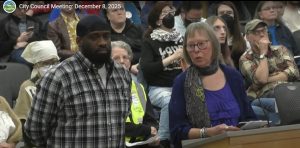State Forester: We removed the initial wildfire risk map and are working to improve its accuracy
3 min read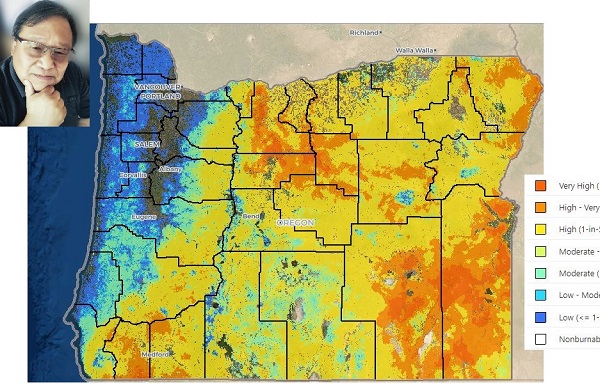
by Cal Mukumoto, Oregon State Forester
Oregon’s wildfire environment has changed significantly in the past decade. Climate change is bringing us hotter, drier summers and historic levels of drought, resulting in severe wildfire conditions and longer, more complex and more expensive fire seasons. We find ourselves at a critical juncture when it comes to wildfire and need to take bold action to mitigate further catastrophic impacts to Oregonians, communities and our state’s natural resources.
Senate Bill 762 laid the foundation for that bold action. The bill passed in 2021 with bipartisan support and made investments in fire-adapted communities, wildfire response and resilient landscapes. Eleven state agencies are tasked with implementing the various components of SB 762. The Oregon Department of Forestry was directed to develop and maintain a statewide wildfire risk map. The map identifies the risk of a wildfire occurring in a given area to help determine where resources are needed most to protect lives and homes when a wildfire does occur.
In addition to writing the rules for map development and maintenance with a rules advisory committee, we were also tasked with defining the wildland-urban interface and assigning a risk classification at the property ownership level (1.8 million tax lots across Oregon). This work had to be completed by June 30, 2022, less than a year after the bill was adopted.
We knew the first iteration of an undertaking of this scale and complexity wouldn’t be perfect, but we have been and continue to be committed to improving the map and our processes related to it. At the same time, our partner agencies are working to collect input as they develop the new codes for defensible space (Office of the State Fire Marshal) and home hardening (Building Codes Division) and address concerns related to homeowner’s insurance (Division of Financial Regulation).
We’ve been soliciting and collecting questions, concerns, and other input since the statewide wildfire risk map was released just over a month ago. We’ve received specific feedback from nearly 2,000 Oregonians that has helped us understand the key areas of concern related to risk classification. We have a window of opportunity before the new codes go into effect to take some immediate steps toward addressing those concerns, and we will be taking full advantage of the opportunity.
As required by SB 762, we posted a wildfire risk map on the Oregon Explorer on June 30, 2022 and sent notifications to property owners in the extreme and high risk classifications shortly after.
In response to input received since posting, we have decided to remove the current iteration of the wildfire risk map from the Oregon Explorer and withdraw the notices sent. We will immediately begin working with Oregon State University on some refinements to improve the accuracy of risk classification assignments based on what we’ve heard from property owners thus far.
Since we are withdrawing the initial map and notifications, the current appeals process will end and any appeals filed will become moot. For those who did submit an appeal, we will be reviewing the information submitted and using it to identify any additional areas where we may need to take a closer look at the data. Please note, this decision does not impact the code development and adoption processes currently underway through Office of the State Fire Marshal for defensible space or Building Codes Division for home hardening.
While we met the bill’s initial deadline for delivering on the map, there wasn’t enough time to allow for the type of local outreach and engagement that people wanted, needed and deserved.
Once this round of refinements is complete, we are planning to bring a draft of the updated map to communities for discussion and input. After another round of revisions based on local input, the map will be finalized. We will then post an updated map on the Oregon Explorer and issue new notices to property owners in the extreme and high risk classifications, which will start a new appeal period.
We are in the process of developing a plan and timeline to complete these activities, including public engagement and outreach opportunities. We will share that publicly as soon as it is complete.
We know how important it is to get this right, and we’re fully committed to continuing to work with the Governor’s Office, legislators, our partner agencies, local governments, and Oregonians to do just that.
